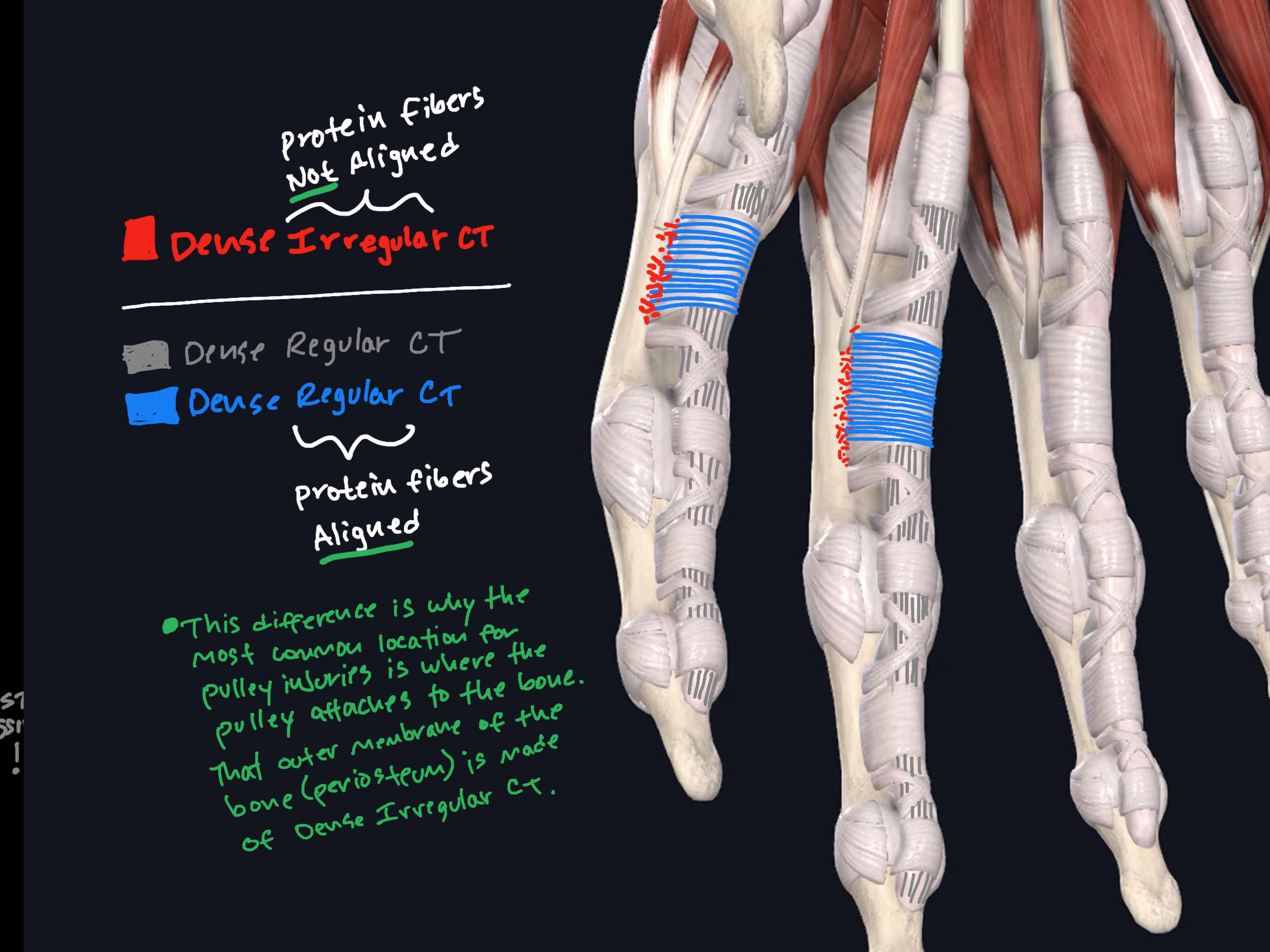Understanding Finger Pulley Injuries
The dreaded pulley injury is common in climbers. Let’s take a look under the surface.
Histology of pulley injuries
Connective tissue is the most common tissue in the body. Breaking it into three broad categories might help you understand how diverse it really is.
Fluid connective tissue (blood)
Connective tissue proper (tendon, ligament, adipose, aerolar, a few more)
Supporting connective tissue (bones, cartilage)
Each connective tissue has a specific structure and function.
An easy example is to compare fluid to supporting connective tissue. In fluid connective tissue, the cells (erythro, or leuko) are literally floating in an extracellular matrix which is mostly liquid and absent protein fibers. In supporting connective tissue (bones as an example) the cells (osteo-) are within an extracellular matrix which is mostly calcified protein fibers.
Regular vs. irregular connective tissue
If we further categorize connective tissue proper (category #2), we see two important distinctions: Dense regular connective tissue (blue, gray in below image) and dense irregular connective tissue. The important difference is the regular vs. irregular part of the name.
You see, the outer lining of your long bones is made of a tissue called the periosteum (around the bone) and is made of dense irregular CT (red in below image). It is called irregular because the protein fibers are designed to resist tension in many directions.
By contrast, your tendons and pulleys (ligaments) are made of dense regular connective tissue. In this tissue, the protein fibers are all lined up in the same direction. This makes dense regular connective tissue much stronger than it's irregular counterpart.
see what it looks like:
what that means for finger injuries
As you can imagine, the most common location for getting pulley injuries is where these two tissues meet at both sides of the finger. This attachment point is called the 'enthesis organ'.
It is common to have pain with direct pressure on the tendon with a pulley injury— but that does not mean you've injured your tendon.
It is actually not that common to have flexor tendon injuries in the finger unless it is at this bony attachment!
Key takeaways:
Pulley injuries usually happen at the enthesis.
Your tendons/ ligaments are stronger than their bony attachments.
There is almost always a safe way to load an injured pulley

